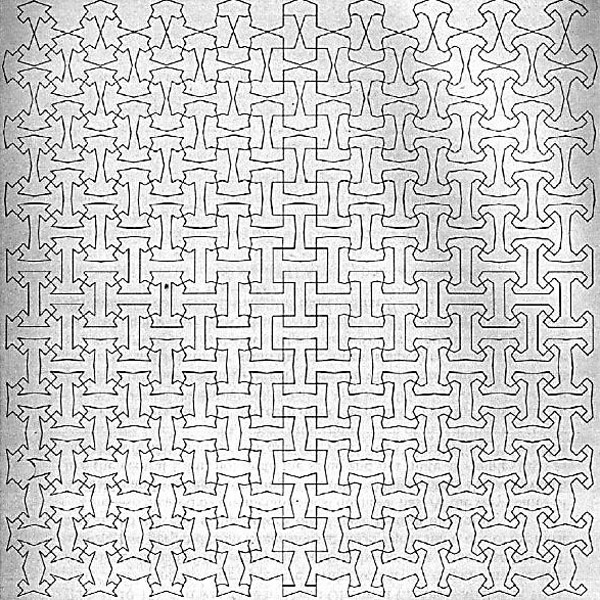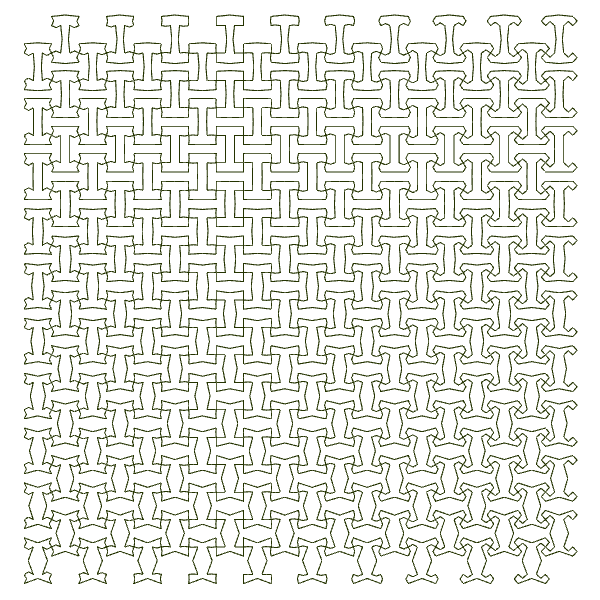I at the Center
by Tuğrul Yazar | September 30, 2013 14:41
I at the Center is a multiple-axes vertex deformation based on a quadrangular hyperframe, designed by David Oleson at the studio of William Huff in 1964. Below, you see the original drawing and my Grasshopper animation based on a single-point attractor, creating the “I” wherever it is. It was a pleasure to read and repeat this deformation, which is a nice exercise in data tree operations and also one of the first examples I see about point attractor algorithms in design education. Here is the Grasshopper file; if you are interested; [GHX: 0.9.0061]. I used lots of data tree tweaks and selected appropriate vertex coordinates in order to transform them on their predefined paths. This one particularly opens up lots of open ends in its algorithm; I’m sure it can evolve into something very different and beautiful if you play with the DFD.

The “I” is composed of 23 vertices and the point attractor affects them in particular directions.

 [1]
[1]
Douglas Hofstadter mentions this algorithm as;
“… One of my favorite parquet deformations is called “I at the Center”, and was done by David Oleson at Carnegie-Mellon in 1964. This one violates the premise with which I began my article: one-dimensionality. It develops its central theme-the uppercase letter `I’ -along two perpendicular dimensions at once. The result is one of the most lyrical and graceful compositions that I have seen in this form. I am also pleased by the metaphorical quality it has. At the very center of a meshis an I-an ego; touching it are other things-other I’s-very much like the central I, but notquite the same and not quite as simple; then as one goes further and further out, the variety of I’s multiplies. To me this symbolizes a web of human interconnections. Each of us is at the very center of our own personal web, and each one of us thinks, “I am themost normal, sensible, comprehensible individual.” And our identity-our “shape” inpersonality space-springs largely from the way we are embedded in that network-which isto say, from the identities (shapes) of the people we are closest to. This means that we help to define others’ identities even as they help to define our own. And very simply but effectively, this parquet deformation conveys all that, and more, to me…”
Hofstadter, D., (1983), Parquet Deformations: A Subtle Intricate Art Form, Chapter 10, in Metamagical Themas Questing for the Essence of Mind and Pattern, New York: Basic Books, p.191-212.
- [Image]: https://www.designcoding.net/decoder/wp-content/uploads/2013/09/2013_08_26-oneatthecenter-def.jpg
Source URL: https://www.designcoding.net/one-at-the-center/